Xiaopei Zhu
Natural Language Induced Adversarial Images
Oct 11, 2024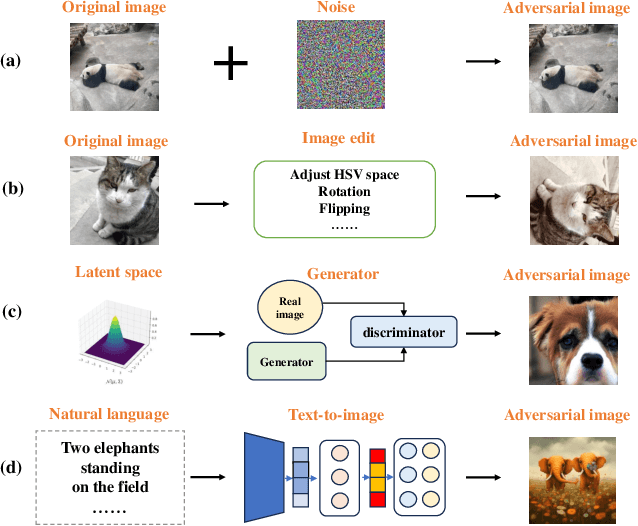

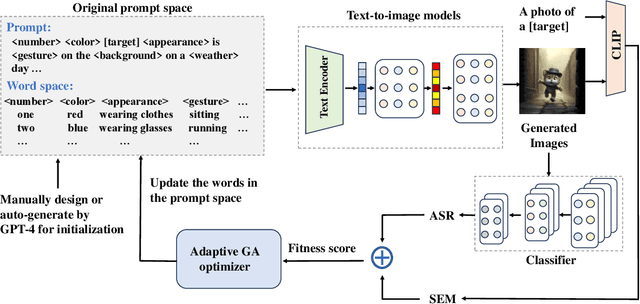

Abstract:Research of adversarial attacks is important for AI security because it shows the vulnerability of deep learning models and helps to build more robust models. Adversarial attacks on images are most widely studied, which include noise-based attacks, image editing-based attacks, and latent space-based attacks. However, the adversarial examples crafted by these methods often lack sufficient semantic information, making it challenging for humans to understand the failure modes of deep learning models under natural conditions. To address this limitation, we propose a natural language induced adversarial image attack method. The core idea is to leverage a text-to-image model to generate adversarial images given input prompts, which are maliciously constructed to lead to misclassification for a target model. To adopt commercial text-to-image models for synthesizing more natural adversarial images, we propose an adaptive genetic algorithm (GA) for optimizing discrete adversarial prompts without requiring gradients and an adaptive word space reduction method for improving query efficiency. We further used CLIP to maintain the semantic consistency of the generated images. In our experiments, we found that some high-frequency semantic information such as "foggy", "humid", "stretching", etc. can easily cause classifier errors. This adversarial semantic information exists not only in generated images but also in photos captured in the real world. We also found that some adversarial semantic information can be transferred to unknown classification tasks. Furthermore, our attack method can transfer to different text-to-image models (e.g., Midjourney, DALL-E 3, etc.) and image classifiers. Our code is available at: https://github.com/zxp555/Natural-Language-Induced-Adversarial-Images.
Infrared Adversarial Car Stickers
May 16, 2024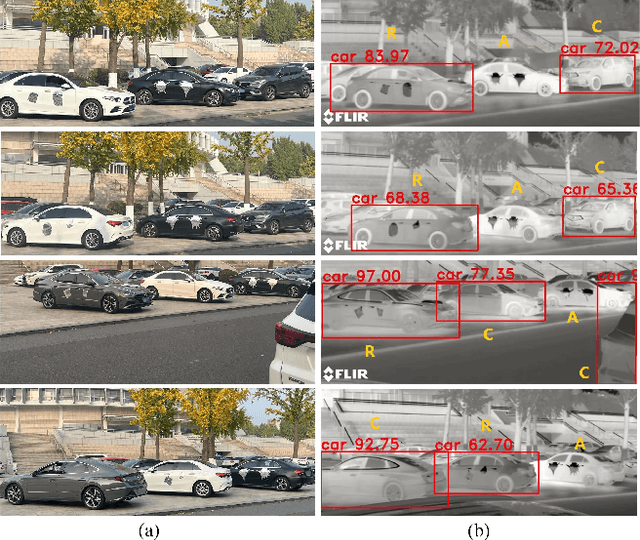


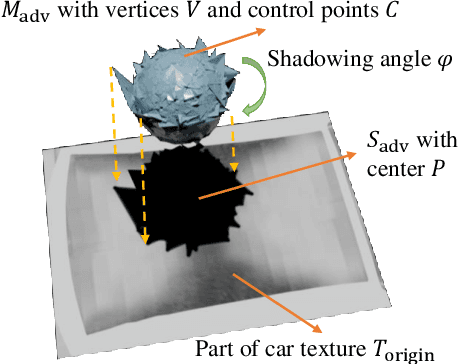
Abstract:Infrared physical adversarial examples are of great significance for studying the security of infrared AI systems that are widely used in our lives such as autonomous driving. Previous infrared physical attacks mainly focused on 2D infrared pedestrian detection which may not fully manifest its destructiveness to AI systems. In this work, we propose a physical attack method against infrared detectors based on 3D modeling, which is applied to a real car. The goal is to design a set of infrared adversarial stickers to make cars invisible to infrared detectors at various viewing angles, distances, and scenes. We build a 3D infrared car model with real infrared characteristics and propose an infrared adversarial pattern generation method based on 3D mesh shadow. We propose a 3D control points-based mesh smoothing algorithm and use a set of smoothness loss functions to enhance the smoothness of adversarial meshes and facilitate the sticker implementation. Besides, We designed the aluminum stickers and conducted physical experiments on two real Mercedes-Benz A200L cars. Our adversarial stickers hid the cars from Faster RCNN, an object detector, at various viewing angles, distances, and scenes. The attack success rate (ASR) was 91.49% for real cars. In comparison, the ASRs of random stickers and no sticker were only 6.21% and 0.66%, respectively. In addition, the ASRs of the designed stickers against six unseen object detectors such as YOLOv3 and Deformable DETR were between 73.35%-95.80%, showing good transferability of the attack performance across detectors.
Physically Realizable Natural-Looking Clothing Textures Evade Person Detectors via 3D Modeling
Jul 04, 2023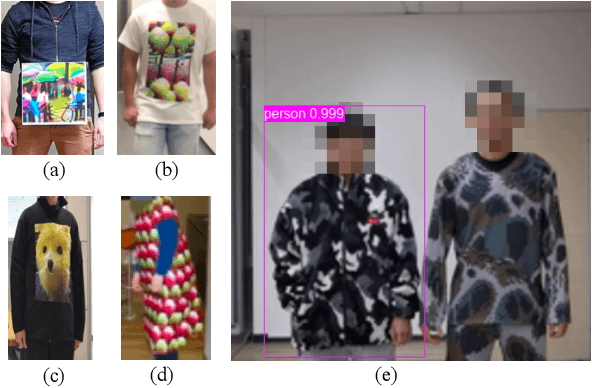

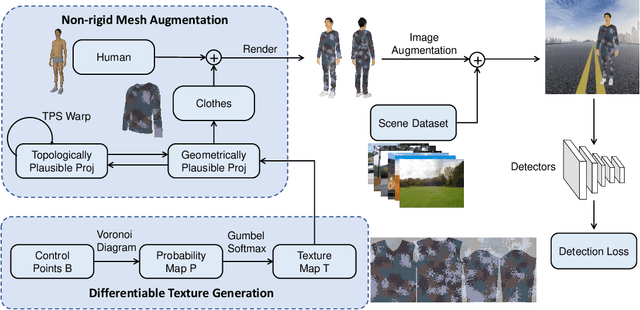
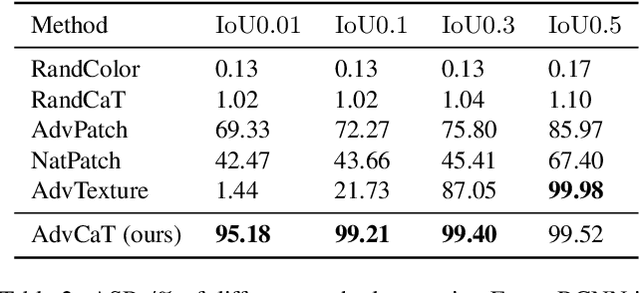
Abstract:Recent works have proposed to craft adversarial clothes for evading person detectors, while they are either only effective at limited viewing angles or very conspicuous to humans. We aim to craft adversarial texture for clothes based on 3D modeling, an idea that has been used to craft rigid adversarial objects such as a 3D-printed turtle. Unlike rigid objects, humans and clothes are non-rigid, leading to difficulties in physical realization. In order to craft natural-looking adversarial clothes that can evade person detectors at multiple viewing angles, we propose adversarial camouflage textures (AdvCaT) that resemble one kind of the typical textures of daily clothes, camouflage textures. We leverage the Voronoi diagram and Gumbel-softmax trick to parameterize the camouflage textures and optimize the parameters via 3D modeling. Moreover, we propose an efficient augmentation pipeline on 3D meshes combining topologically plausible projection (TopoProj) and Thin Plate Spline (TPS) to narrow the gap between digital and real-world objects. We printed the developed 3D texture pieces on fabric materials and tailored them into T-shirts and trousers. Experiments show high attack success rates of these clothes against multiple detectors.
Infrared Invisible Clothing:Hiding from Infrared Detectors at Multiple Angles in Real World
May 12, 2022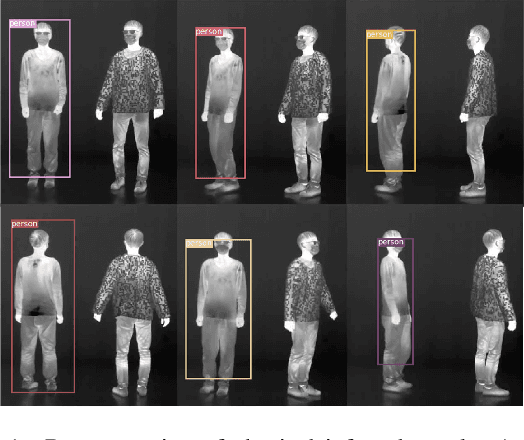

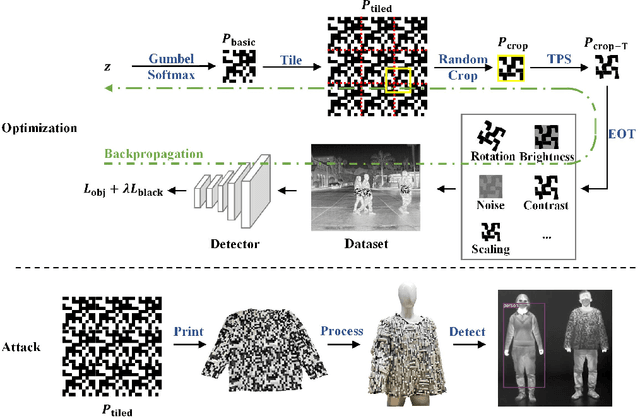
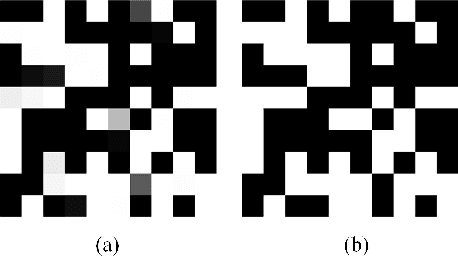
Abstract:Thermal infrared imaging is widely used in body temperature measurement, security monitoring, and so on, but its safety research attracted attention only in recent years. We proposed the infrared adversarial clothing, which could fool infrared pedestrian detectors at different angles. We simulated the process from cloth to clothing in the digital world and then designed the adversarial "QR code" pattern. The core of our method is to design a basic pattern that can be expanded periodically, and make the pattern after random cropping and deformation still have an adversarial effect, then we can process the flat cloth with an adversarial pattern into any 3D clothes. The results showed that the optimized "QR code" pattern lowered the Average Precision (AP) of YOLOv3 by 87.7%, while the random "QR code" pattern and blank pattern lowered the AP of YOLOv3 by 57.9% and 30.1%, respectively, in the digital world. We then manufactured an adversarial shirt with a new material: aerogel. Physical-world experiments showed that the adversarial "QR code" pattern clothing lowered the AP of YOLOv3 by 64.6%, while the random "QR code" pattern clothing and fully heat-insulated clothing lowered the AP of YOLOv3 by 28.3% and 22.8%, respectively. We used the model ensemble technique to improve the attack transferability to unseen models.
Adversarial Texture for Fooling Person Detectors in the Physical World
Mar 18, 2022
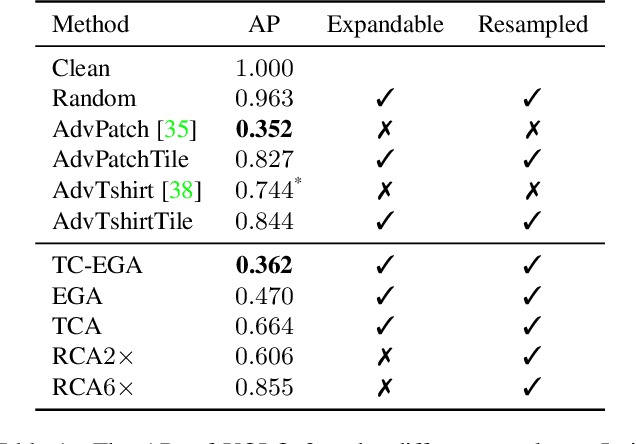
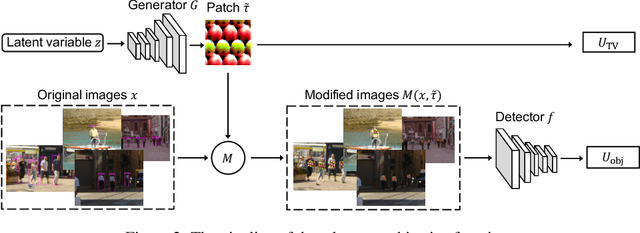

Abstract:Nowadays, cameras equipped with AI systems can capture and analyze images to detect people automatically. However, the AI system can make mistakes when receiving deliberately designed patterns in the real world, i.e., physical adversarial examples. Prior works have shown that it is possible to print adversarial patches on clothes to evade DNN-based person detectors. However, these adversarial examples could have catastrophic drops in the attack success rate when the viewing angle (i.e., the camera's angle towards the object) changes. To perform a multi-angle attack, we propose Adversarial Texture (AdvTexture). AdvTexture can cover clothes with arbitrary shapes so that people wearing such clothes can hide from person detectors from different viewing angles. We propose a generative method, named Toroidal-Cropping-based Expandable Generative Attack (TC-EGA), to craft AdvTexture with repetitive structures. We printed several pieces of cloth with AdvTexure and then made T-shirts, skirts, and dresses in the physical world. Experiments showed that these clothes could fool person detectors in the physical world.
Fooling thermal infrared pedestrian detectors in real world using small bulbs
Jan 20, 2021



Abstract:Thermal infrared detection systems play an important role in many areas such as night security, autonomous driving, and body temperature detection. They have the unique advantages of passive imaging, temperature sensitivity and penetration. But the security of these systems themselves has not been fully explored, which poses risks in applying these systems. We propose a physical attack method with small bulbs on a board against the state of-the-art pedestrian detectors. Our goal is to make infrared pedestrian detectors unable to detect real-world pedestrians. Towards this goal, we first showed that it is possible to use two kinds of patches to attack the infrared pedestrian detector based on YOLOv3. The average precision (AP) dropped by 64.12% in the digital world, while a blank board with the same size caused the AP to drop by 29.69% only. After that, we designed and manufactured a physical board and successfully attacked YOLOv3 in the real world. In recorded videos, the physical board caused AP of the target detector to drop by 34.48%, while a blank board with the same size caused the AP to drop by 14.91% only. With the ensemble attack techniques, the designed physical board had good transferability to unseen detectors.
 Add to Chrome
Add to Chrome Add to Firefox
Add to Firefox Add to Edge
Add to Edge